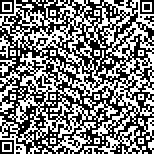|
|
| |
|
|
| 本文已被:浏览 334次 下载 571次 |

码上扫一扫! |
|
|
| 多源大数据支持下的共享单车出行与空间品质耦合研究 |
|
杨林川1, 喻冰洁2, 梁 源3, 赵桂林4,5,6,7,8,9
|
|
1.(通讯作者):西南交通大学建筑学院,教
授,博士生导师,yanglc0125@swjtu.edu.cn;2.西南交通大学建筑学院,博士研究生;3.香港浸会大学社会科学院,博士研究生;4.Bike-Sharing Usage;5.Space Quality;6.Multi-Source Data;7.Four-Quadrant Analysis;8.Geographically Weighted Regression Model;9.Coupling
Relationship
|
|
| 摘要: |
| 在“碳达峰、碳中和”的发展背景下,
共享单车作为高效、便捷、绿色的出行方式,对
建设低碳城市具有重要意义。以厦门岛为例,
利用共享单车轨迹数据、百度街景等多源大数
据,挖掘共享单车出行时空特征,并基于服务
设施密度、功能多样性、交通可达性、骑行视觉
舒适度、骑行设施完整度等原则建立了骑行空
间品质评价模型,运用四象限法与地理加权回
归(GWR)模型,解析人本尺度下的“单车出
行—空间品质”的耦合关系。研究发现:厦门
岛的共享单车出行形成了“多点一轴”的空间格
局,骑行网络以地铁站点为核心向外扩散。“单
车出行—空间品质”的四象限分析将各路段划
分为高出行—高品质、高出行—低品质、低出
行—高品质、低出行—低品质四种类型。GWR
模型分析显示,骑行品质要素在不同的路段对单
车出行的影响差异显著。基于此,提出构建层级
化的站域慢行“微中心”、开展差异化的街道空间重塑的规划响应策略,为城市慢行系统多尺度空间优化提供了“定点”与“定向”的理论支撑与
优化思路。 |
| 关键词: 共享单车出行 空间品质 多源大数据 四象限分析 GWR模型 耦合关系 |
| DOI:10.13791/j.cnki.hsfwest.20230407 |
| 分类号: |
| 基金项目:国家自然科学基金面上项目(52278080) |
|
| The Coupling of Bike-Sharing Use and Cycling Space Quality: A Multi-Source Data Supported Analy |
|
YANG Linchuan,YU Bingjie,LIANG Yuan,ZHAO Guilin
|
| Abstract: |
| The transportation sector is a significant contributor to carbon emissions, accounting for
nearly a quarter of the total. Given China’s current focus on achieving “carbon emission peak before
2030” and “carbon neutrality before 2060”, it is crucial that this sector receives increased attention in
China. Presently, the rapid growth of and excessive reliance on private vehicles has created immense
pressure on road traffic, leading to elevated levels of air and noise pollution as well as carbon
emissions. Governments and scholars alike are increasingly concerned with promoting the adoption
of sustainable transportation modes (or encouraging environmentally-friendly travel behaviors
among residents). Against this backdrop, the development of a green transport system becomes both
urgent and indispensable. Such a transport system would help alleviate urban traffic congestion,
enhance traffic efficiency, and mitigate environmental pollution and carbon emissions.
In recent years, bike-sharing has emerged as a prominent green travel mode, gaining
popularity in numerous cities worldwide, including New York, Paris, Beijing, Shanghai, and
Chengdu. This sustainable travel mode boasts almost zero carbon emissions and can serve as both
a standalone mode of transport and a convenient last-mile solution. Furthermore, bike-sharing
encourages physical activity, benefiting the overall health of individuals and communities alike.
With its potential to alleviate traffic congestion, reduce energy consumption, curb air pollution,
and promote public health, bike-sharing holds immense promise for enhancing urban transport
systems. However, the urban built environment has not adequately adapted to the rise and expansion
of the bike-sharing market, particularly concerning the explosive growth of shared bikes. Since
its introduction in Xiamen (the study area, a coastal city in China) in 2016, bike-sharing has
experienced rapid development but has also presented significant challenges to sustainable urban
growth. The uncontrolled occupation of sidewalks and entrances/exits of metro stations, along with
supply-demand imbalances, have become common issues in Xiamen. These challenges highlight
the need for effective urban spatial resource allocation and careful consideration of the bike-sharing
phenomenon to ensure sustainable development in the city.
The evaluation of the bike-sharing travel environment (or cycling space) and the identification
of its issues and areas for improvement have become crucial and intriguing research endeavors.
To this end, this study utilizes multi-source data, including bike-sharing trajectory data and Baidu
street view imagery, to examine the spatio-temporal characteristics of bike-sharing usage on
Xiamen Island, China, specifically between 6 a.m. to 10 a.m. Furthermore, the study establishes an
assessment model for cycling space quality by incorporating parameters such as density, diversity,
accessibility, and visuality. A four-quadrant analysis and a geographically weighted regression (GWR)
model are then employed to analyze the coupling relations between bike-sharing usage and cycling
space quality. This comprehensive approach enables the identification of areas and aspects that
require improvement to create a more cycling-friendly environment. Specifically, the four-quadrantanalysis, which jointly considers bike-sharing travel demand and cycling space quality, categorizes road segments into four groups: “high usage-high
quality”, “high usage-low quality”, “low usage-high quality”, and “low usage-low quality”. Moreover, the GWR model reveals the spatially heterogeneous
impact of each independent variable on bike-sharing usage, and its result provides profound policy implications for spatial optimization.
The findings of the study are as follows: the bike-sharing usage pattern on Xiamen Island can be characterized as “one axis and multiple points”.
Generally, bike-sharing trips are short in distance and duration, with distances between 500-1 500 m and durations of 5-10 minutes being the most common.
In the study period (6-10 a.m.), popular bike-sharing routes include journeys from residential areas to metro stations, from metro stations to workplaces, and
from BRT (Bus Rapid Transit) stations to metro stations. Qiaoque East Road and Chengqing Road belong to “high usage-low quality” roads, and they are
in the greatest need of improvement. Accordingly, the study proposes two improvement strategies: the development of slow-traffic micro-centers in metro
station areas and the place-varying redesign of street spaces.
The study serves as a theoretical and practical foundation for the optimization of the urban slow-traffic system at multiple scales. As mentioned,
improving the built environment for bike-sharing is crucial to support its growth and maximize its potential as a sustainable travel mode. Other than the
measures commonly mentioned in the existing literature, two improvement strategies that can be applied in Xiamen Island and elsewhere are proposed,
including the development of slow-traffic micro-centers in metro station areas and the place-varying redesign of street spaces. Arguably, the improvement of
the urban built environment is not the only approach to promoting bike-sharing usage. For example, raising public awareness about the environmental and
health benefits of bike-sharing and promoting a culture of cycling (e.g., through the way of workshops, events, and information campaigns) is essential as it
can dispel misconceptions and encourage positive attitudes towards cycling, consequentially facilitating bike-sharing usage. To sum up, it is believed that
through collaborative efforts and a comprehensive approach, the way for a greener and more sustainable future in the transportation sector can be paved,
aligning with collective aspirations for a carbon-neutral world. |
| Key words: Bike-Sharing Usage Space Quality Multi-Source Data Four-Quadrant Analysis Geographically Weighted Regression Model Coupling
Relationship |
|
|
|
|


